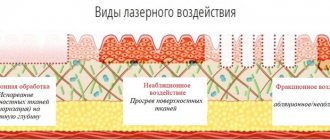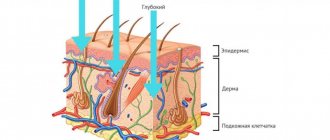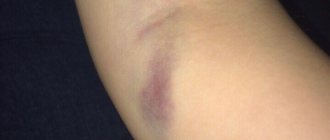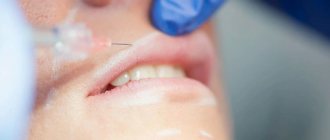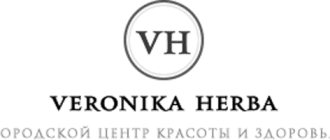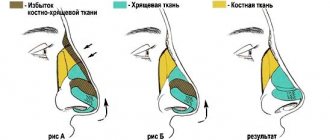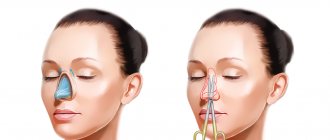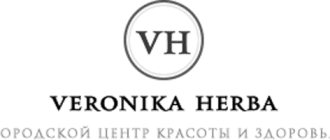array(10) { ["ID"]=> string(2) "18" ["IBLOCK_TYPE_ID"]=> string(7) "content" ["LIST_PAGE_URL"]=> string(37) "#SITE_DIR#/plasticheskaya -khirurgiya/" ["NAV_CACHED_DATA"]=> NULL ["NAME"]=> string(45) "Plastic surgery_new" ["SECTION"]=> array(24) { ["ID"]=> string(3) "166" ["NAME"]=> string(29) "Scarplasty" ["DETAIL_PICTURE"]=> string(4) "1154" ["PICTURE"]=> string(55) "/upload/iblock/d1e /d1e1164cb3900f0e94bd033a4894e544.png" ["DESCRIPTION"]=> string(3958) "
Surgical methods for removing scars and scars make them as invisible as possible
Scars can be not only the result of surgical interventions. In addition to surgical incisions, various diseases leave behind unpleasant consequences, for example, acne, or injuries, including burns. Visible scars cause aesthetic problems to their owner, and with them psychological discomfort. Moreover, sometimes scar tissue can also be a source of physiological problems - for example, when a protruding scar comes into contact with seams or elastic bands of clothing, which rub the damaged area and cause pain.
The presence of visible scars often deprives a person of self-confidence. Women especially suffer from this, but for men, a scar is not always an adornment. The most difficult thing is for those with scars on the face - such defects cannot be hidden under clothing and are very difficult to disguise with cosmetics. In an attempt to restore aesthetics, attractiveness and comfort of life, people turn to the help of a plastic surgeon.
Modern plastic surgery offers an operation known as scar excision to solve this problem. The surgical technique is indicated for eliminating rough, old marks left after medical operations resulting from wounds and injuries, burns and other accidents. The operation allows you to cope with serious aesthetic imperfections.
Plastic surgery does not take much time, has a short recovery period and is suitable for most patients - in the absence of contraindications. The operation is recommended for complex cases when cosmetic procedures are not able to completely remove fibrous tissue and achieve an ideal aesthetic result - for example, in the presence of atrophic, hypertrophic or keloid scars.
" ["DEPTH_LEVEL"]=> string(1) "1" ["DESCRIPTION_TYPE"]=> string(4) "html" ["UF_CONSULT"]=> string(18) "Free" ["UF_TIME"]=> string(15) "up to 1 hour" ["UF_ANESTHESIA"]=> string(27) "Local anesthesia" ["UF_STATIONARY"]=> string(23) "Not required" ["UF_REHAB"]=> string(12) “1 month” [“UF_PRICE”]=> string(5) “3,000” [“UF_DESCRIPTION”]=> string(4295) “Some diseases can also leave scars, for example complicated chicken pox, acne. Such scars are small in size, but there can be many of them, up to several dozen. If the pustules are close together, the scars can merge with each other and form extensive scar areas. The most unfavorable prognosis for the formation of scar defects is in III-IV degree burns. With such burns, the scars that form can limit movement in the joints of the limbs or cause an obstacle to head movements (turns, bends), and permanently change the appearance. Also, after burns, the likelihood of forming a special type of scar - a keloid scar - is much higher. Such a scar continues to grow even a year after the injury and actively grows into neighboring tissues. In such a difficult situation, there is no hope that the scars will resolve themselves over time. On the contrary, over time, scar tissue may become denser, brown pigmentation may appear on it, and the formed scar may begin to shrink (become shorter), further limiting movement in the limbs or changing its appearance. Today, skin grafting is used to repair scar skin defects. Placing scar skin defects is a full-scale operation involving excision of the scar and replacement of the resulting defect with a flap of skin. When a flap of skin is completely cut off from the donor area, such plastic surgery is called free. If incomplete - not free. Modern techniques for plating scar skin defects make it possible to eliminate scars of any size, density and location. The plate of cicatricial skin defects changes is shown only after the formation of the scar is completed. At the site of a wound, the healing of which proceeds without infection (suppuration), a “young” scar (swollen, red, slightly painful) is formed after three weeks, and a “mature” one (light, soft, painless) - after a year. This period of time should be taken into account when planning the correction of scar changes. Treatment of wounds that refuse to heal even after several months (granulating wounds) and keloid scars is also performed by skin grafting. But that’s a completely different story.” ["UF_PHOTO"]=> array(1) { [0]=> int(128) } ["UF_DOCTORS"]=> array(2) { [0]=> int(845) [1]=> int( 847) } ["UF_PROTECT"]=> string(1) "2" ["UF_REVIEWS"]=> array(0) { } ["UF_SHORT_DESC"]=> string(42) "Plasty of skin defects" ["UF_MAIN_PIC" ]=> string(1) "0" ["UF_SHOW_MAIN"]=> string(1) "0" ["UF_ACTIONS"]=> array(2) { [0]=> int(1047) [1]=> int(1051) } ["UF_ANCHORS"]=> string(808) "
Content
- Indications and contraindications
- Operation stages
- Preparing for surgery
- How is the operation performed?
- Result of the operation
" ["EDIT_LINK"]=> NULL } ["ELEMENTS"]=> array(8) { [0]=> int(2951) [1]=> int(2948) [2]=> int(2949) [ 3]=> int(4157) [4]=> int(2950) [5]=> int(2954) [6]=> int(2824) [7]=> int(2953) } [“IPROPERTY_VALUES”] => array(10) { [“SECTION_META_KEYWORDS”]=> string(29) “Scarplasty” [“ELEMENT_META_TITLE”]=> string(126) “Scarplasty in Moscow, photo, make an appointment, prices at the Osnova clinic” ["ELEMENT_META_KEYWORDS"]=> string(29) "Scar plasty" ["ELEMENT_META_DESCRIPTION"]=> string(194) "Clinic Osnova: scar plasty at affordable prices in Moscow, Varshavskoe highway, 14, appointment by phone." [“SECTION_META_TITLE”]=> string(240) “Scar plastic surgery in Moscow: prices, before and after photos, reviews | Get scar plastic surgery inexpensively | Plastic surgery clinic "Osnova" » ["SECTION_META_DESCRIPTION"]=> string(268) "Scar plastic surgery at the Osnova clinic in Moscow. Reviews, prices, before and after photos, modern techniques, European equipment, a wide range SECTION_PICTURE_FILE_ALT"]=> string(59) "Plasty of scar skin defects" ["SECTION_PICTURE_FILE_TITLE"]=> string(59) "Plasty of scar skin defects" [ "SECTION_DETAIL_PICTURE_FILE_ALT"]=> string(59) "Plasty of scar skin defects" ["SECTION_DETAIL_PICTURE_FILE_TITLE"]=> string(59) "Plasty of scar skin defects" } ["CACHED_TPL"]=> string(64062) "
- Description
- Prices
- Doctors
Rehabilitation period after scar resurfacing
The photo above shows the skin before and after laser scar resurfacing.
The recovery period after the session lasts 5–7 days.
At this time, it is important to follow the rules recommended by cosmetologists:
- For three days, do not lubricate the scar area with creams and ointments. You can only use restorative compounds prescribed by a specialist.
- Do not scrub or peel the damaged area for three weeks.
- Do not comb the treated area or remove scabs.
- For a month after laser resurfacing of acne scars and other damage, it is necessary to treat the scar area with a protective cream before each exposure to the sun.
It is important to know how the skin will behave after the procedure. The first three days there is redness and swelling, after which there is peeling. However, these are not negative effects or a specialist mistake, but a natural reaction that should pass.
If the doctor performed resurfacing according to all the rules and used high-quality equipment, then the most serious side effect may be the formation of dark spots near the scar. This often happens if the patient has been in the sun for a long time after the procedure, neglecting the advice of the cosmetologist.
Next, we will look at reviews of the laser method, as well as photographs of scars before and after resurfacing.
Read material on the topic: Laser biorevitalization of the face without complications and side effects
Cost of scar plastic surgery in Moscow
The website shows basic prices without taking into account the individual characteristics of the patient. The exact final calculation is provided by the surgeon during the consultation. Tests are paid separately.
Excision of scars on the face (1 cm)
3000 ₽
Excision of scars with plastic surgery using local tissues
Excision of scars with plastic surgery using local tissues, category 1
15000 ₽
The indicated price includes all stages of plastic surgery:
– stay in the clinic, – the work of doctors, – consumables and much more.
The price does not include preoperative tests and examinations - the patient undergoes preparatory activities in any clinic at his request. The posted rates are basic but not final. The cost may vary depending on the complexity of the personal case. To obtain an accurate calculation, a face-to-face consultation with a surgeon is necessary.
Surgical methods for removing scars and scars make them as invisible as possible
Scars can be not only the result of surgical interventions. In addition to surgical incisions, various diseases leave behind unpleasant consequences, for example, acne, or injuries, including burns. Visible scars cause aesthetic problems to their owner, and with them psychological discomfort. Moreover, sometimes scar tissue can also be a source of physiological problems - for example, when a protruding scar comes into contact with seams or elastic bands of clothing, which rub the damaged area and cause pain.
The presence of visible scars often deprives a person of self-confidence. Women especially suffer from this, but for men, a scar is not always an adornment. The most difficult thing is for those with scars on the face - such defects cannot be hidden under clothing and are very difficult to disguise with cosmetics. In an attempt to restore aesthetics, attractiveness and comfort of life, people turn to the help of a plastic surgeon.
Modern plastic surgery offers an operation known as scar excision to solve this problem. The surgical technique is indicated for eliminating rough, old marks left after medical operations resulting from wounds and injuries, burns and other accidents. The operation allows you to cope with serious aesthetic imperfections.
Plastic surgery does not take much time, has a short recovery period and is suitable for most patients - in the absence of contraindications. The operation is recommended for complex cases when cosmetic procedures are not able to completely remove fibrous tissue and achieve an ideal aesthetic result - for example, in the presence of atrophic, hypertrophic or keloid scars.
3000 15000 2
Intraruminal administration of diprospan.
A highly effective method of treating raised (hypertrophic, keloid) scars. Diprospan has a pronounced inhibition of scar growth processes, and also causes atrophy (reduction) of already formed excess tissue. That is, the protruding dense scar gradually “sags” and becomes soft. In the case of protruding postoperative scars in scar areas (décolleté, upper back, outer surface of the shoulders, upper lip) this is often the only possible method. The drug is administered intrarumally in a very small dose, and therefore does not have a general effect on the body. It is administered once a month. Usually 2-4 injections are enough to achieve the full effect (flattening the scar to the level of the surrounding skin). Recently, to correct hypertrophic scars, in some cases, intraruminal injections of small doses of botulinum toxin are used - it causes relaxation and greater softness of the scar.
Operation stages
- Surgeon consultation
- Analyzes and examinations
- Preparing for surgery
- Operation
- Rehabilitation
Surgeon consultation
At the first consultation, the surgeon examines the patient. Then, together with the patient, the desired result is discussed and the optimal plastic surgery technique is selected. The doctor calculates the price for scar excision and issues a list of mandatory tests and examinations.
Analyzes and examinations
As part of preoperative diagnostics, the patient is required to undergo general tests, biochemistry, infectious markers, determine blood type and Rh factor.
It is also necessary to obtain a fluorogram, ECG, and coagulogram. Based on the results, the possibility of surgery is determined. The first phase of the preparatory stage is determining the absence or presence of contraindications. To do this, the patient must undergo a mandatory examination. A list of diagnostic measures and laboratory tests will be provided by the plastic surgeon at the first consultation. The price for scar excision does not include preparation - tests are taken and paid separately in a clinic convenient for the patient. The standard list includes:
– general tests, – biochemistry, – coagulogram, – infectious markers, – determination of blood group and Rh factor, – fluorography, – electrocardiography.
Some patients, if necessary, are additionally prescribed consultations with specialized specialists, for example, a cardiologist. Based on the results of the examination, the patient must receive a physician’s opinion on the absence or presence of contraindications and, as a consequence, on the possibility or impossibility of performing the operation. If examinations show the absence of contraindications, the patient and plastic surgeon select a suitable date for plastic surgery. It is important to remember that surgical excision of a scar cannot be performed earlier than a year after the appearance of scars, since it is during this period that the formation of fibrous tissue ends. If you make a correction at the formation stage, the result may seriously differ from the desired one.
Then you need to consult with an anesthesiologist, who selects the appropriate type and dosage of anesthesia based on the patient's health condition. After this, preparation becomes entirely the responsibility of the patient himself.
Preparing for surgery
If there are no contraindications, a planned correction date is set.
You should stop taking anticoagulants (aspirin, heparin) and hormonal drugs 2-3 weeks before. It is also highly recommended to give up cigarettes and alcohol. Before surgery, consultation with an anesthesiologist is necessary. For 2-3 weeks, you need to stop taking any blood thinning drugs, such as aspirin or heparin, as well as hormonal drugs. Quitting smoking and alcohol is strongly recommended. If the operation is performed under general anesthesia, you should not eat food 8 hours before surgery.
Operation
The correction is made according to a pre-planned method.
The surgeon excises the scar, and in case of extensive damage, applies a skin flap from the donor area and fixes it with sutures. Plastic surgery takes place mainly under local anesthesia. The duration takes no more than an hour. In most cases, surgical excision of scars takes place under local anesthesia. As a rule, this is quite sufficient, since the correction is simple and low-traumatic. In rare cases, it is possible to use general anesthesia - mainly for large volumes of work and high complexity of plastic surgery.
Initially, the surgeon performs excision of the scar using one of the techniques - tangential, spindle-shaped or step-by-step. The choice of technique is carried out in advance, based on the characteristics of the corrected area - size, density, location of fibrous tissue, etc. Then the edges of the wound are carefully aligned and the wound is sutured. At the end of the correction, the surgeon sutures the thinnest threads. seams.
To correct extensive scar defects, including after burn injuries, free or non-free skin grafting is used using a skin flap from the donor area. With free plastic surgery, the flap is completely cut off from the area; with non-free plastic surgery, it is partially cut off. When working using this technique, the surgeon cuts off a surface layer of skin no more than 0.8 mm thick from the donor area using a special instrument. The flap is then perforated to increase the area, applied to the corrected area and fixed with separate
The duration of the operation depends on the volume and complexity of the work and usually does not exceed 1 hour. After suturing the operated area, the patient can go to the hospital room under the supervision of medical personnel. You must remain under observation for several hours. If there are no complications or complaints about the condition, the patient can leave the clinic and go home for further recovery and rehabilitation.
Rehabilitation
The recovery period after scar plastic surgery is no more than 5 days. The patient must follow all recommendations of his surgeon. The operated area should be protected from exposure to ultraviolet radiation and injury. Additional appointments are possible if necessary.
Predicted result
Surgical correction of scar defects on the skin is a fairly effective method for eliminating complex formations.
With the help of plastic surgery, it is possible to get rid of scars that cosmetology cannot cope with. These are atrophic scars, which form mainly after skin diseases such as acne, or hypertrophic scars, which are a product of excessive collagen production. Plastic surgery also allows you to cope with one of the most difficult types of scar formations to correct - keloids. Plastic surgery is an effective way to eliminate the consequences not only of traces of surgical intervention, but also of various injuries, including severe ones. Traces of a burn, gunshot wound or other accidents, or simply a congenital tendency to form keloid scars can cause a lot of anxiety or even physical discomfort. Plastic surgery allows you to restore psychological and physical comfort, restore lost aesthetics and improve the quality of life.
Correcting aesthetic deficiencies has a positive effect on all areas of life. Increasing self-confidence and attractiveness leads to the establishment of social relationships, a successful fight against complexes against the background of low self-esteem and the acquisition of internal harmony. Therefore, surgery helps to get rid of not only external defects, but also other, deeper problems that were caused by them.
The quality of the result depends not only on the skill of the surgeon, but also on the responsibility of the patient. To achieve the best aesthetics, it is necessary to follow the rules of rehabilitation, in particular, protect the operated area from ultraviolet radiation and traumatic influences.
Preparation for laser scar resurfacing
Preparation before the procedure is carried out to ensure that dark spots do not form on the skin after laser exposure.
14–20 days before the session you need to exclude:
- solarium;
- taking medications that increase skin sensitivity to ultraviolet radiation: ointments such as Protopic, Psoralen, drugs Doxycycline, Griseofulvin, Etacridine, Phenothiazine;
- tanning in the sun;
- taking anti-acne medications with vitamin A (“Roaccutane”, “Acnecutane”).
During the described period and during recovery after laser resurfacing of scars, it is necessary to treat the scar areas with a protective agent before each exposure to the sun.
Popular questions about scar plastic surgery
Here are the questions that patients ask most often. If you haven't found the answer to your question, you can ask it during a free consultation.
How long does the result last?
Modern scar plastic techniques make it possible to get rid of defects of various types, volumes and complexity. This includes the effects of acne, burn marks and the consequences of various injuries. For plastic surgery, a small skin flap is used from the donor area on the patient’s body. The result obtained during the operation becomes visible immediately after the surgeon’s work is completed. The effect of plastic surgery lasts forever. Much, including the quality and duration of the result, depends on the qualifications and skill of the surgeon who performs the operation. But to achieve maximum results, the patient must also contribute. First of all, it is necessary to thoroughly follow all the prescriptions, recommendations and prohibitions that the plastic surgeon will voice. During the recovery period, both the final effect itself and the period during which it will last are laid down and formed.
What are the contraindications? Is it harmful to have this operation?
Contraindications to scar plastic surgery include decompensated diseases of internal organs, blood clotting disorders, the presence of mental disorders and inflammatory processes in the area of the proposed plastic surgery. Also, the surgery is usually not performed on patients under 16 years of age. If contraindications are temporary, scar plastic surgery becomes possible after elimination. If there are permanent contraindications, surgery is prohibited. There is nothing harmful to health in the operation itself, but in some cases complications may occur. Complications are often caused by poor training of the surgeon, negligence of the patient during the rehabilitation period, and some individual characteristics. In addition, this type of plastic surgery cannot be rushed; for maximum effect, you must wait until the scar tissue has completely completed its formation. Premature correction can lead to the formation of keloid scars, hypertrophy of scar tissue or deformation of the skin.
How many procedures are needed for the final result?
Without seeing the patient in front of you, without assessing his condition, it is very difficult to say exactly how many procedures will be required to achieve the desired effect. To do this, you need to attend an in-person consultation, at which you can assess the volume and complexity of the work ahead and indicate the approximate number of procedures. In addition, the need for additional sessions may appear not only before, but also during the work on eliminating scars. Large scars require several sessions; in some cases, a combination of surgical techniques and cosmetic procedures is indicated. It is also worth considering that the result depends on many factors, including the individual characteristics of the patient himself. For many, one correction procedure is enough to achieve the desired aesthetic result. Some may require several visits to the surgeon. For more accurate information, it is recommended to make an appointment - after an in-person examination, it is possible to tell more about the scope of the work to be done.
Still have questions?
Or can't find the information you need?
Back call
Mon-Sun from 09:00 to 21:00
Question to the doctor
Question to the doctor
How many procedures are needed for the final result?
Without seeing the patient in front of you, without assessing his condition, it is very difficult to say exactly how many procedures will be required to achieve the desired effect. To do this, you need to attend an in-person consultation, at which you can assess the volume and complexity of the work ahead and indicate the approximate number of procedures. In addition, the need for additional sessions may appear not only before, but also during the work on eliminating scars. Large scars require several sessions; in some cases, a combination of surgical techniques and cosmetic procedures is indicated.
It is also worth considering that the result depends on many factors, including the individual characteristics of the patient himself. For many, one correction procedure is enough to achieve the desired aesthetic result. Some may require several visits to the surgeon. For more accurate information, it is recommended to make an appointment - after an in-person examination, it is possible to tell more about the scope of the work to be done.
Nazoev Kirill
Plastic surgeon at Osnova Clinic
Collotherapy
Gel Collost is a high-tech biological material, namely collagen of the first type with a completely preserved structure. It is used to correct retracted (hypotrophic) scars. Immediately after administration, the drug creates the missing volume and also activates tissue regeneration in the affected area, triggering the formation of new collagen fibers and improving the quality of the newly formed tissue (greater order of the fibers, greater elasticity).
Scar correction with Collost usually allows you to achieve the desired effect immediately after the first procedure. The drug itself undergoes gradual resorption in tissues, but due to the stimulation of collagenogenesis, the injected collagen is gradually replaced by the body’s own collagen.
